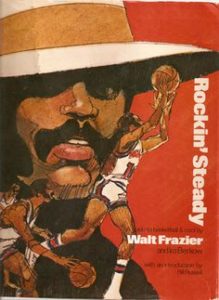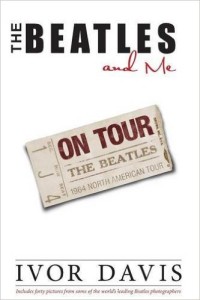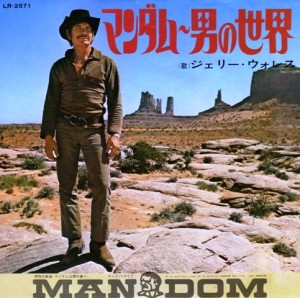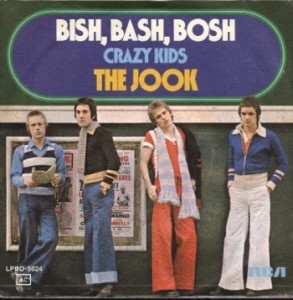Linda McCartney’s Wide Prairie Is a Secret Delight
August 19th, 2019Wide Prairie (1998) – Linda McCartney
Produced by Paul McCartney with Linda McCartney, Lee Perry, and Ian Maidman * Label: Parlophone/MPL (UK); Capitol/MPL (US) * Charts: UK LP #127
Linda McCartney’s only solo album, a compilation of tracks (some previously released) that appeared in October 1998, six months after she passed away, is a secret delight. You need to approach it as a whole, letting it play all the way through, to fully appreciate its charms.
What happened when it came out was more or less nothing. Reviewers opted out of criticizing the recently deceased Beatle wife who’d already been through enough when unflattering isolated tracks of her harmonizing on stage with Paul began making the rounds as joke fodder. For consumers who expected the worst when Wide Prairie appeared, one click of the sample button for the first track on Amazon to reveal her belting out “well I was born in Ar-i-zona” in a faux-cowgirl drawl was all the confirmation they needed.
Caroline Sullivan’s review in The Guardian—one of the very few attempts at a formal critique—carried the headline “Linda’s Last Salvo Hits a Bum Note.” Her short piece reflected skim-through engagement, acknowledged some of the fuss and promotional buzz about Linda’s cuss words on the track “The Light Comes from Within,” and otherwise encouraged readers to remember her for photography, vegetarianism, and animal rights activism. The review ensured that a larger portion of the merely curious would never give Wide Prairie a proper listen.
The digital music sales platforms of the late-nineties were an ill fit for this album because it was, in fact, an album. Its ebb and flow reveals a carefully sequenced effort on the part of executive producer Paul McCartney, whose personal investment in—and affection for—these tracks’ fun factors are a continual, welcome presence. He showcases a woman he cherished being around, and he wants us to get a sense of what that was like through pop music, his chosen means of communication. That being so, its reissue this month (August 2019) as a vinyl collector’s attraction makes fine sense.
Here’s my own experience with the album: when I listened for the first time, I smiled at some point during every single song, and the same thing has happened each time since. The face muscles trigger involuntarily and there you go. This effect qualifies Linda McCartney’s Wide Prairie as one of my personal cult albums, full of beloved particulars, and for my money, it’s the single most complete, pleasurable, and least self-conscious long-player of any Beatle family member.
“Wide Prairie” (1973, 1974) (Written by Linda McCartney; produced by Paul McCartney): So Linda McCartney isn’t Linda Ronstadt. But her vocal ability isn’t this album’s focus so much as her personality, attitude, and shared musical history with Paul. He makes this clear in the liner notes, reporting that they “had a ball” when they recorded the title track. “Wide Prairie” starts out Euro-noir, in a minor key, with spoken lines by Linda (one of the album’s recurring intro tactics). She’s in Paris, waiting for a flight, when “this guy” with the decidedly non-noir voice of Paul asks, “Have you got a light?” Then it jumps to a cowgirl setting full of R’s, fiddles (by Johnny Gimble), and the hearty background vocals of Paul and Denny Laine. But then it jumps back to Euro-noir for the duration, with Paul really feeling it, moaning approval as if lampooning the filler vocals on “Uncle Albert.” Non-drawling Linda repeats her opening recitation, but this time, Paul says “you got a light?” in a jive accent. And then the payoff: Linda closes by asking, “Know what happened?” and Paul responds, “ah-buh-dee-buh-dah-buh-dee-buh-dah-buh…” (First recorded in France in 1973, then finished up in Nashville in June 1974, although the notes say June 1975. Likely a misprint.)
“New Orleans” (1975, 1979) (Written by Linda McCartney; produced by Paul McCartney): From the 1975 Venus and Mars sessions at Allan Toussaint’s Sea-Saint Studios, Linda’s “New Orleans” emerges from the familiar piano rhythm of “Heart and Soul” and blooms into something rollicking and irresistible. The words string together like Mardi Gras beads into a list of some of the Crescent City’s notable eats along with “greasy jeans” and “fifties tunes.” The payoff: an unexpectedly ominous bridge where Linda name checks the legendary Dew Drop Inn (closed in 1970) and the Dungeon (opened in 1969) in what sounds like a stern Marlene Dietrich imitation. Her “don’t go down to the Dungeon” warnings then resolve into a round of don’t go downs and all frowns turn upside down. Who’s playing the harmonica and the growling trombone? The liner notes don’t say.
“New Orleans”
“The White Coated Man” (1988, 1989) (Written by Paul McCartney, Linda McCartney, and Carla Lane; produced by Paul McCartney): Track three takes us back to the Euro-noir vibe (winking at Abba’s “The Day Before You Came”), with a spoken intro by Linda’s friend, the television writer Carla Lane. Her words express the bewildered perspective of a caged rodent observing the sinister actions of a lab worker. Lane’s impeccable diction makes for an unexpected rat-dialogue vehicle; before you’re done fully processing this, though, Linda’s sympathetic singing voice has come in for the refrain. It’s an example of pacing that’s one of Wide Prairie‘s virtues. Nothing drags on long enough for you to start thinking meanly about it. In fact, “The White Coated Man” comes off as a vivisection protest that’s eminently adorable. This, of course, might be the intention.
“The White Coated Man”
“Love’s Full Glory” (1980) (Written by Linda McCartney; Produced by Linda and Paul McCartney): Track four brings to mind Linda’s connection with Neil Young, of whom she’d taken a 1968 photo that appeared forty years later on the cover of his Sugar Mountain: Live at Canterbury House (2008). “Paul and I are friends because we both knew and loved Linda,” writes Young in his Waging Heavy Peace (2012, p. 20). “I met [her] first during Buffalo Springfield days.” The steel guitar (a soaring performance by the legendary Lloyd Green), major 7th chords, and the “Expecting to Fly” melody snippets all mix together to evoke Young. The “take me home” refrain, though, is notable for its jittering rhythm and crafty chord changes that ask Green to step outside of his standard genre.
“Love’s Full Glory”
“I Got Up” (1973, 1998) (Written by Linda McCartney and Paul McCartney; produced by Paul McCartney): Songs five and six are catharsis songs, and their appearance side by side makes them more memorable. On “I Got Up,” you’ll remember that you’re listening to someone who was in the midst of fighting cancer, and you’ll feel a sense of admiration for her delivery of the words “I got up, and I ain’t going down again” as one of her final recorded statements. But we also know that Linda was likely addressing a number of other targets. When she sings, near the end, that “whatever I do, one thing is certain it will be without you,” it often reaches the ear as “It won’t be without you.” This gives it an interesting nuance, as if she’s plausibly addressing her words to someone she loves or forgives or, perhaps, vows not to forgive. The sound is mid-seventies Beach Boys. Imagine if, in an alternate universe, the 1976 Brian Wilson sang these defiant words on a subsequently improved 15 Big Ones.
“I Got Up”
“The Light Comes from Within” (1998) (Written by Linda McCartney and Paul McCartney; produced by Paul McCartney): This one’s the f-bomb song that stirred up pre-release chatter and prompted critical listeners to feel disappointment that the song itself was no “Working Class Hero.” This all obscured its assets as an expression of emotional release concerning a fairly wide array of potential “stupid dick” antagonists, who we can assume to be of the “tower-building” chauvinist persuasion. When Linda conveys her words, we can feel a release that’s separate from the song’s actual musical aspects. What comes through clearest in “The Light Comes from Within” isn’t anger. It’s her sentiment of wanting to “smell the flowers,” which characterizes the Linda we always knew. The angst-free pop sound it’s dressed in communicates to us that she’s comfortable in her own musical skin. At the bridge, when she sings “I want a sense of cause,” potentially misheard as sense of calm with no harm done, a sublime chord sequence happens.
“The Light Comes from Within”
“Mister Sandman” (1977) (Written by Pat Ballard; produced by Lee Perry and Paul McCartney): The Tighten Up reggae compilations were reportedly a steady, nerve-calming presence in the rural McCartney household during the acrimonious Beatle break-up years. McCartney mentions them in the notes for this song, and we can assume that Jamaican music had an ongoing bonding quality for Paul and Linda. Their reggae version of “Love Is Strange” made an indelible appearance on Wings’ 1972 Wild Life, and “Seaside Woman” comes from the same era. The tracks for “Mister Sandman” (the 1954 Chordettes hit) and “Sugartime” come from a 1977 visit to Lee “Scratch” Perry’s Black Ark Studios. Perry, a strong contender for the title of Reggae Founder, oversaw the sessions while members of his Upsetters (Boris and Barrington Gardner on bass and rhythm guitar, Milky Boo on drums, and Winston Wright on keyboards) laid them down. Vocals, and maybe lead guitar, were later added at Paul and Linda’s own Ranachan Studio in Scotland (known appropriately, where this track is concerned, as “Rude Studios” by 1998). Paul’s guitar contributions, which I assume are the funny, skittering leads, are big smile moments, as are his joyful yelps near the fade.
“Mister Sandman”
“Seaside Woman” – Suzy and the Red Stripes (1972, 1977) (Written by Linda McCartney; produced by Paul McCartney): After the easy-going “Mr. Sandman,” “Seaside Woman” kicks in with assurance, building on the island vibe with classic Wings pop smarts. The fact that it saw pseudonymous release (on Epic, a competing label) as a 1977 seven-inch by “Suzy and the Red Stripes” has given it a reputation as a forgettable trifle, but it shimmers on Wide Prairie like the studio gem it is. Paul points to this as Linda’s first solo flight as a songwriter, which he encouraged her to do in response to ATV publishing, who complained that her co-writing credits on previous McCartney hits were merely a business ruse. Although the track went through a remix in 1977, the raw materials—the bubbling bass, cheeky Rhodes, Denny Laine’s steelpan-like guitar lines, and the overall jubilation—come from an original session during the much-maligned McCartney era of 1972. An animated film for “Seaside Woman” by the Argentinian artist Oscar Grillo, with music credited to “Linda McCartney and Wings,” won the Short Film Palme d’Or at the Cannes Film Festival in 1980. Promotional hustle at Epic Records (headed by Steve Popovich, who is also credited for mastering) pushed it up to #59 on the Billboard Hot 100 in the summer of ’77.
“Seaside Woman”
“Oriental Nightfish” (1973) (Written by Linda McCartney; produced by Paul McCartney): “Oriental Nightfish” is the third Wide Prairie offering with a spoken, Euro-noir intro. In the liner notes Paul refers to the narratives of the Shangri-Las and the Coasters as reference points, but they never did anything so hallucinogenic. “It was a Thursday night, I was working late,” reports Linda, when she “first caught sight of the oriental nightfish.” Colors swirl, the room gets hot, the narrative morphs into music (Denny Laine on flute and Paul on guitar, who channels Pink Floyd’s David Gilmour), and it’s clear at this point that we’re dealing with drug music.
“Oriental Nightfish” was the second Linda recording, after “Seaside Woman, to get the short-film treatment in 1980. It was animated, coincidentally, by Pink Floyd cohort Ian Emes, who depicts a Linda-like figure playing keyboard in a dark mansion. Her draped clothing swooshes off and she drifts around the night, very naked, like a fish in an aquarium. (Emes’s focus on apparel brings to mind Aldous Huxley’s mescalin-fueled words in The Doors of Perception about the sublimity of the folds in wind-blown skirts. [And how’s that for a suggestive nod, on my part, to Linda’s history with Jim Morrison?])
The 1984 British VHS release for Paul’s Rupert the Bear cartoon, a huge seller that included his beloved children’s song “We All Stand Together,” added the two Linda films as bonus tracks. Paul blows off complaints, in the notes, from mothers who objected to the nudity, but the general trippiness—other than the nudity—likely had more of a disturbing effect on kids who grew up to participate in a Facebook group called “Oriental Nightfish Haunted My Childhood.”
“Oriental Nightfish”
“Endless Days” (1987) (Written by Linda McCartney and Mick Bolton; produced by Linda McCartney and Ian Maidman): Paul’s liner notes sum up the cozy appeal of “Endless Days” as a song “Linda played often at home” in which her vocal “captures a special kind of innocence that those of us who knew her loved deeply.” This sentiment is at the heart of Wide Prairie‘s reason for being, and it’s especially touching when taken in as part of the whole album. Co-writer Mick Bolton was a journeyman keyboardist who had been playing in Paul Brady’s band along with Geoff Richardson and Ian (now Jennifer) Maidman (who was also a core member of the Penguin Cafe Orchestra). Bolton had been tutoring Linda on keyboard when he contributed the bridge for “Endless Days.” The non-multi-tracked nature of the presentation, as recorded in Maidman’s studio, adds to its sincerity.
“Poison Ivy” (1987) (Written by Jerry Leiber and Mike Stoller; produced by Linda McCartney and Ian Maidman): This version of the Coasters classic is the second of two songs recorded at Jennifer Maidman’s Positive Earth Studio along with Mick Bolton and Geoff Richardson. What’s special about these tracks is the knowledge that they’re Linda’s thing. She’s making music she loves with her own gang of talented friends while Paul’s off doing something else, and she’s having a good time. She muffs lyrics (“glory hallelujah” for “common cold will fool ya”), laughs, and it’s all good.
“Poison Ivy”
“Cow” (1988) (Written by Linda McCartney, Paul McCartney and Carla Lane; produced by Paul McCartney): “Cow” is the second of two late ’80s animal rights tracks Linda did with Paul and the television writer Carla Lane. As with “Man in the White Coat,” it mixes forthright, sobering lyrics (“one more day of grazing before the slaughter truck… He will eat you because he didn’t look”) with music that glows with cuteness (a Casio keyboard on a toy piano setting), but again, that might be the point. The phrase “standing in your June fields” can be misheard as “jute fields,” which adds a veggie-reinforcing thought dimension involving India, the leading jute-producing nation where Hindus regard cows as sacred.
“B-Side to Seaside” – Suzy and the Red Stripes (1977) (Written by Linda McCartney and Paul McCartney; produced by Paul McCartney): Moments of carefree musical inspiration abound in Paul McCartney’s lifetime catalog, and they’re precious for their own sake. His is a world where castoff offerings that provoke sneering among some bring ongoing pleasure to many more. Witness “B-Side to Seaside,” written with Linda as a consciously flippant flipside for “Seaside Woman.” But it’s so much nonsense fun, building on the spirit of both the A-side and “C Moon,” both from 1972. The instrumental hook is just one of the many moments where McCartney gives a lark the kind of adornment that might serve as crucial career material to a lesser fowl. Linda’s spoken intro (one of five on Wide Prairie) resonates with the kind of zap you’ll only detect in full force when you’re listening to the full album, when you’ve recently taken in “I Got Up” and “The Light Shines from Within,” and you’re thinking about Linda, her unusual life, her critics, her influence, and the positive attitude she always projected. “Came for a weekend,” she says. “Ended in a hate joke.” There’s emotional richness in those words, yet they accompany an otherwise playful track. Notice a theme?
“B-Side to the Seaside”
“Sugartime” (1977, 1998) (Written by Charlie Phillips and Odis Echols; produced by Lee Perry and Paul McCartney): The second of the two Lee “Scratch” Perry tracks revamps another pop vocal standard from the ’50s, this one a 1957 hit by the McGuire Sisters. As with “Mr. Sandman” above, the groove is impeccable. Paul fills in with hard-to-decipher patois in place of a guitar solo. The song fading out at 2:07 is another example of the entire Wide Prairie album’s careful and conscious sense of pacing.
“Sugartime”
“Cook of the House” – Wings (1976) (Written by Linda McCartney and Paul McCartney; produced by Paul McCartney): Let me repeat what I said for “B-Side to Seaside”: Moments of carefree inspiration abound in Paul McCartney’s lifetime catalog, and they’re precious for their own sake. His refusal to take cues from the ideologues who reviewed records during his commercial heyday will one day be better understood and appreciated. “Cook of the House,” featuring Linda’s best known vocal up to this point, appeared on the B-side for “Silly Love Songs,” the track that served as a cheerful anthem for the summer of ’76 and whose overuse as an analogy for rock’s death (or just Paul’s) quickly became more tiresome than its saturated airplay. “Cook of the House,” in fact, crackles with rock ‘n’ roll flipside lore, bringing to mind Rosie and the Originals’ 1960 “Give Me Love” (the B-side for “Angel Baby”) which John Lennon adored and which was likely a Beatle inner circle favorite.
The sound of cooking grease comes off as scratchy vinyl; Linda sings instead of Paul, just as one of the Originals, on “Give Me Love,” sings lead instead of “Angel Baby” Rosie; a tenor sax honks aimlessly; the drums sound like sofa cushions. What does Paul sing at the beginning? Why is there a chorus of acknowledgement after he sings what he does? What was Linda actually singing in her unpretentious way in those verses? Not clear at all. (Lyric sheets reveal that she’s singing, as suspected, about groceries, as she does in “New Orleans.”) How many consumers spun the 45 and relished the muffled and thumpy rock ‘n’ roll they heard? Untold numbers. But go and read some of the words that most any critic has written, in all seriousness, about this song and you’ll get a sense of what fuels her outburst on “The Light Comes from Within.” On Wide Prairie, “Cook of the House” gets a rightfully honored sequencing slot, familiar and well-loved as it is to those of us who love its singer.
“Cook of the House”
“Appaloosa” (1998) (Written by Linda McCartney and Paul McCartney; produced by Paul McCartney): “Appaloosa,” an ode to the Nez Perce tribe and their horses, closes the album as one of Linda’s final recordings, done in March 1998. It’s the fifth song to begin with a spoken intro, and you worry what its documentary aura forebodes. But then it gives way, like “The White Coated Man,” to music that’s sprightlier and cuter than you’re led to expect. Certainly a musicologist somewhere has explained why a two-measure melody line played in one key, repeated note-for-note a step above, then back again in the original key—like what happens all throughout “Appaloosa”—has a childlike effect. These figures ring out like piano exercises, as do the Native America-signifying intervals in the bridge, and you think of Linda working on her song ideas, always keeping after her keyboard skills as a committed member of team Paul. (He closes the album with an orchestrated rendering of the melody, which we can understand to be a farewell to her from him.) What if Linda tried to do this song differently, more mournfully, full of manufactured pathos? The evidence presented on the rest of Wide Prairie suggests that it just wouldn’t be Linda. R.I.P.
“Appaloosa”


 Pp. 229-230: “There are many stories about Keith Moon’s extraordinary behavior, most of which sound amusing when told. In reality, these incidents were anything but funny to witness, as they very often involved some degree of violence or destruction of someone else’s property.”
Pp. 229-230: “There are many stories about Keith Moon’s extraordinary behavior, most of which sound amusing when told. In reality, these incidents were anything but funny to witness, as they very often involved some degree of violence or destruction of someone else’s property.” On guarding Pete Maravich (p. 49): “You try to get him angry at himself, so you pressure him. If he makes a bad pass or you steal it from him you might be able to break downcourt for an easy layup because he’s at the other end talking to himself. And with his hair flying, you sort of wait for him to stop dribbling. Then for a second all the hair that’s been flying in the wind comes down over his face and he can’t see. That’s when you steal the ball. He can make the most incredible shots. When he’s hot, you just have to wait until the hurricane lets up.”
On guarding Pete Maravich (p. 49): “You try to get him angry at himself, so you pressure him. If he makes a bad pass or you steal it from him you might be able to break downcourt for an easy layup because he’s at the other end talking to himself. And with his hair flying, you sort of wait for him to stop dribbling. Then for a second all the hair that’s been flying in the wind comes down over his face and he can’t see. That’s when you steal the ball. He can make the most incredible shots. When he’s hot, you just have to wait until the hurricane lets up.”



